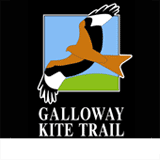3. Conservation Actions
 Click for more images Click for more images | |
| Conservation action The red kite is subject to the longest continuous conservation project in the world. Concerned individuals, appalled at the continuing destruction of kites, formed the first Kite Committee in 1903, and initiated the first nest protection schemes. The RSPB is thought to have been involved continuously since 1905. The rarity of the red kite made it a prime target for egg collectors and bounty hunters, who robbed up to a quarter of nests each year. More sophisticated nest protection initiatives during the 1950s and 1960s succeeded in reducing the proportion of nests robbed, and this is no longer regarded as a serious problem for red kites. In 1980s it became apparent that the kites would be unlikely to be able to spread out of Wales because of the low rate of chick production caused by the marginal habitat, activities of egg collectors and illegal poisoning. In recognition of this, the RSPB and NCC (now Natural England and Scottish Natural Heritage), got together in 1986 to discuss the feasibility of reintroducing the red kite to England and Scotland. Reintroduction would only be considered if the IUCN (International Union for Conservation of Nature) criteria were met in full:  1 Existence of good historical evidence of former natural occurrence. 2 A clear understanding of why the species disappeared. Only if the disappearance was due to human action and the species was unlikely to recolonise naturally, would it be considered. 3 The factors causing extinction have been rectified. 4 Suitable habitat is still present to support a viable population. 5 Birds intended for release are genetically as close as possible to the former indigenous population. 6 The removal of birds for the project does not jeopardise the survival of the population from which the birds are taken. The red kite is one of few bird species in Britain that fulfils all the criteria. In 1989 six Swedish birds were released at a site in north Scotland and four Swedish and one Welsh bird in Buckinghamshire. Altogether, 93 birds of Swedish and Spanish origin were released at each of the sites, with the last birds released in 1993 in Scotland and 1994 in England. The first successful breeding was recorded at both sites in 1992, and two years later kites reared in the wild themselves reared young for the first time. Successful breeding populations have become established in both locations. These early successes justified the next stages of the programme with the aim to produce five selfsustaining breeding populations of red kites in Britain by year 2000. The eventual aim is to ensure that the red kite breeding population expands to colonise all suitable habitat throughout the UK. Accordingly, the first 11 birds were released in East Midlands in 1995. The first breeding was recorded in 1997, when three pairs bred successfully fledging eight young. Almost a half of the birds released in the Midlands originated from the south England population. In 1996 the first 19 red kites (originating from Germany) were released at a site in Central Scotland. They first nested in 1998 when two pairs fledged five young. In 1999 the first red kites were released at Harewood House, north of Leeds, and to everyone’s surprise, the first successful breeding took place the following year. To help the English and Scottish populations to join up, another release site was set up in Dumfries and Galloway in 2001. Four pairs nested there two years later. Releases in the Derwent Valley in north-east England started in 2004, and in Aberdeenshire in 2007. A release programme began in 2008 at County Down, Northern Ireland. The red kite re-introduction programme has been a great success, with a steady increase in number of breeding pairs in the introduced populations in England and Scotland. Until now, the red kites have enjoyed the goodwill of local people, and it is important for the long term survival of the birds that this continues. Although kites were traditionally associated with low-intensity agriculture, the re-introduced kites seem to be doing well even in the more intensively farmed southern England. The main threats they face are illegal poisoning by bait left out for foxes and crows, secondary poisoning by rodenticides, and collisions with power cables. These problems are continually being addressed to reduce their impact on the kites. All the released birds and a proportion of the wildfledged young have been fitted with coloured wing tags, each with a number/letter combination that allows for individual recognition. Please report any sightings of tagged kites to the RSPB. This will help with monitoring the whereabouts and movements of the tagged individuals and the spread of the kite population as a whole. (Source: RSPB Red Kite Information leaflet (revised 2007)) | |
 |
|
|












